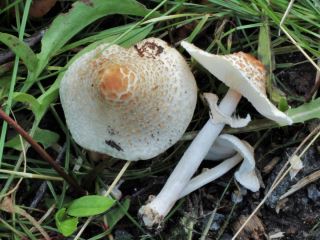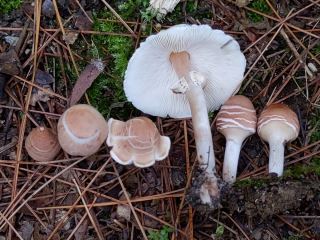Welcome to Mushroom World
Step into the fascinating world of mushrooms with Mushroom World – your go-to resource for fungi information. Our site offers clear information and beautiful images of mushrooms.
If you're curious about what fungi actually are and how they differ from plants and animals, be sure to visit our what are fungi? page for an easy-to-understand explanation.
Since there are thousands of known species of mushrooms, we have limited our database to the most common ones. New species are also continuously added to the site.
Come and explore the wonders of mushrooms with us. We hope you find our site informative, inspiring, and a valuable resource on your journey of mushroom discovery.
What you can do on Mushroom World
Browse the database
Explore mushrooms from the alphabetical list or search by name or properties.
Identify a mushroom
Know some characteristics but not the name? Use our mushroom identification helper to narrow it down.
New to identification? Start with identification basics.
Test your knowledge
Try our identification quiz and see how many mushrooms you recognise. Each run gives you new questions.
Upload your photos
Have good mushroom photos to share? Use the upload form and we will see if we can include them on the site.
Today's Mushroom
A quick highlight from our database
Today's mushroom is Lepiota cristata (Stinking Dapperling). It grows in Europe, North America and Asia.
Dimensions: Cap 2-5 cm diameter; stem 2-3.5 cm tall * 0.3-0.4 cm diameter
Description:
Lepiota cristata, commonly known as the Stinking Dapperling, is a small agaric mushroom recognised by its reddish-brown, scaly cap and unpleasant odour reminiscent of rubber or rotting vegetables. It is typically found growing singly or in groups on soil in grassy areas, woodland edges, and sometimes in parks or gardens, particularly in late summer and autumn.
Cap reddish-brown, breaking up into minute, pointed scales and revealing whitish flesh beneath. It is conical or convex and often has a noticeable umbo. The flesh is white, becomes slightly brown with age, and is thin and fragile. Gills free from the stem, close together, with frequent short gills. Colour ranges from white to buff. Stem more or less equal in width, smooth, and fragile. Whitish in colour, often turning pinkish to brownish towards the base. A delicate white ring is usually present on the upper portion, though it may easily disappear. The base is covered with white mycelium. Spore print white.
Microscopic Features: Spores very distinctively shaped, resembling a rowing boat from above or a bullet in profile. They are smooth, measure 5–8 × 3–5 µm, and are dextrinoid.
Lepiota cristata on the First Nature Web site.
Lepiota cristata on the MushroomExpert.Com Web site.
The second photo is by Huafang under the Attribution-ShareAlike 3.0 Unported license.
If you are interested in this mushroom, look it up in our database for more detailed photographs and additional information.


Many mushrooms are poisonous, and some can be lethally toxic. Distinguishing between edible and poisonous mushrooms can be very challenging. Therefore, we strongly advise against consuming wild mushrooms. This website does not contain any information about the edibility or toxicity of mushrooms.
Although efforts have been made to ensure accuracy on this website, the information may contain errors and omissions. Therefore, all content provided is for educational and informational purposes only and should not be relied upon or used as a basis for consuming any plants or mushrooms.
External links are provided for reference only. We do not endorse or take responsibility for the content, advice, or products found on these sites or in any advertisements shown on this website.